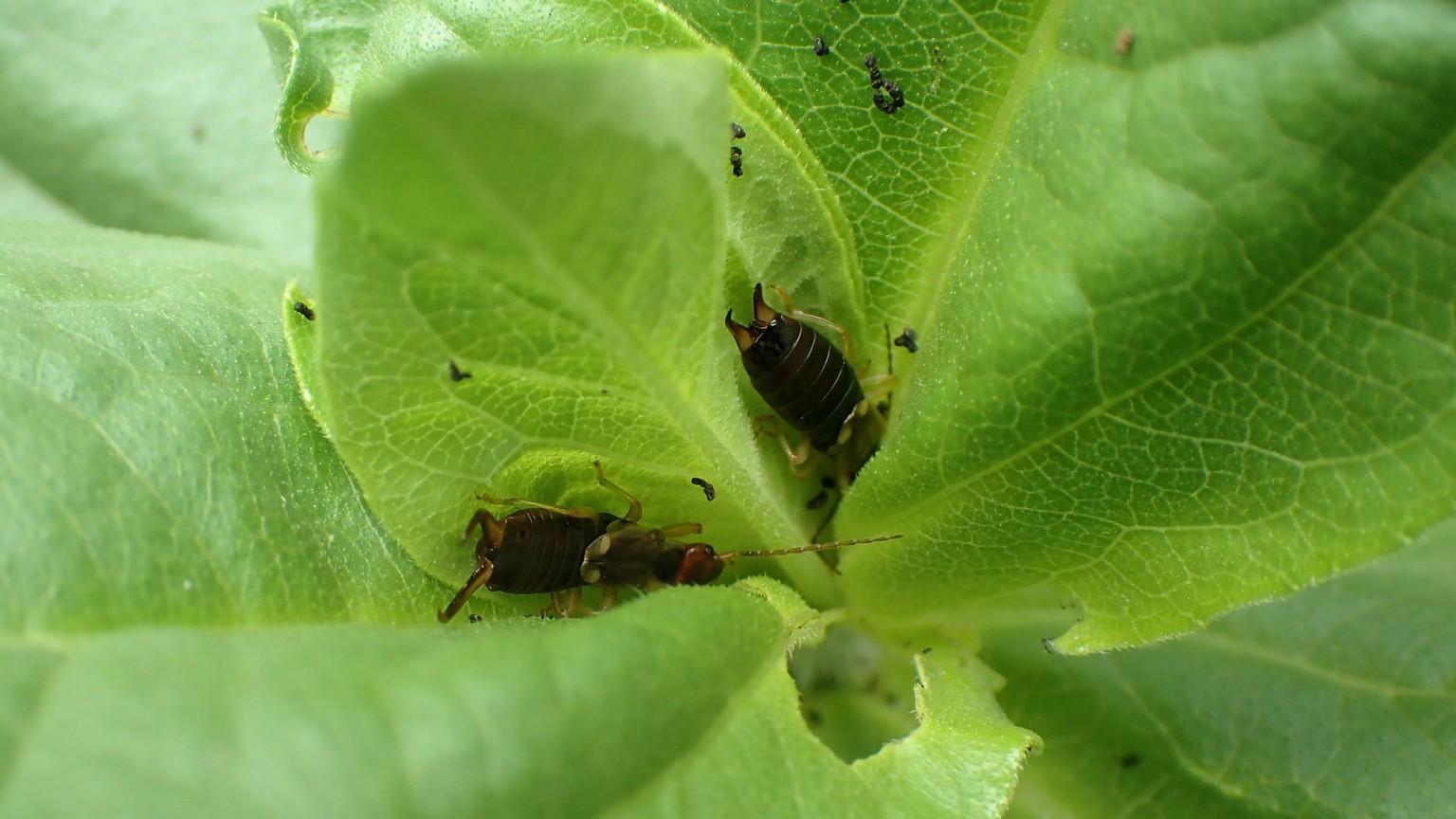Key points
- Earwigs are common insects in the garden and occasionally in the home.
- The most characteristic feature of earwigs is the pair of pincers at the tip of the abdomen. Adult earwigs are reddish-brown and about 3/4 of an inch long.
- They live in dark, moist places such as under stones, in mulch, soil, and plant debris.
- Earwigs are mostly nocturnal and do not attack people.
- There are several species of earwigs in Maryland. The most common is the European earwig (Forficula auricularia).
- Even though earwigs have wings, they move by crawling.

European earwig
Photo: Gary Alpert, Harvard University, Bugwood.org
Biology
- The adult female earwig lays her eggs in the soil and guards them. She cares for the young until they are old enough to fend for themselves. She then leaves them to lay more eggs.
- Young earwigs resemble adults but are smaller.
- The time required to complete the entire life cycle varies depending on environmental conditions and food.
- Earwigs have a varied diet, feeding on aphids, snails, insect larvae, and plant material. They will occasionally feed on flower petals.
- Earwigs are considered a nuisance pest and only cause significant damage to plants when populations are high.
Earwigs on seedlings
- Earwigs can be minor pests of vegetable seedlings, although they also benefit gardeners by digesting organic matter and devouring soil-borne pests.
- They feed on seedlings at night and spend the daytime in dark places, under organic debris or behind boards and other objects.
- They are rarely a significant problem in home vegetable gardens.
- Cover seedlings with row cover to protect them from earwigs.
Management indoors
- Indoors they may be found in furniture cushions, linens, fabrics, or just scurrying around.
- To minimize earwig problems indoors, keep areas close to the house clear of debris and hiding places.
Management outdoors
- In small backyard situations, earwigs can generally be controlled by persistent trapping. A simple trap can be made using a tuna or cat food can. Add 1/2 inch of vegetable oil and place them around the garden. Dump and refill with oil as they fill up with earwigs.
- Another trap involves a moistened, rolled-up newspaper. Or use short pieces of bamboo or hose. Place these traps on the soil near plants just before dark. Earwigs have a preference for tight, dark places, and will crawl into the tubes and stay there.
- In the morning, shake the earwigs into soapy water to kill them. Continue this procedure every day until you are no longer catching earwigs.
- Natural predators of earwigs include toads, birds, and insect predators.
Based on HGIC publication HG 4 Earwigs, author Mary Kay Malinoski (retired), University of Maryland Extension Specialist, Home and Garden Information Center.
Rev. 2020
